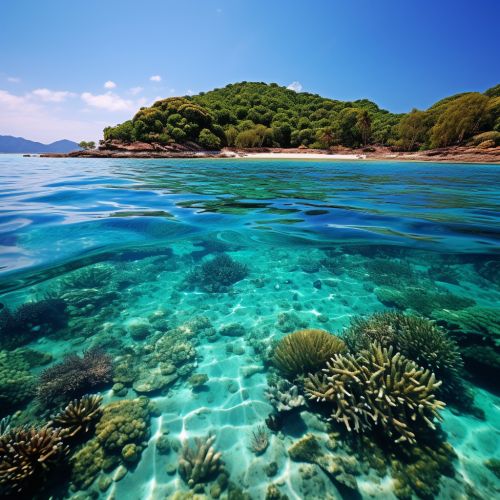The Ecology of Marine Protected Areas and Fishery Management
Overview
Marine Protected Areas (MPAs) are designated regions of the ocean where human activities are more tightly regulated than the surrounding waters - similar to parks we have on land. These places are given special protections for natural or historic marine resources by local, state, territorial, native, regional, or national authorities. MPAs safeguard marine ecosystems, preserving biodiversity and protecting endangered species. They also serve as a buffer against the impacts of overfishing, providing a refuge for fish populations and thus playing a crucial role in fisheries management.


Marine Protected Areas
Definition and Purpose
Marine Protected Areas (MPAs) are regions of the sea where protective measures are implemented to conserve and manage natural and cultural marine resources. These areas are established to protect marine ecosystems, preserve biodiversity, and safeguard endangered species. MPAs can take many forms ranging from wildlife refuges to research facilities. MPAs restrict human activity for a conservation purpose, typically to protect natural or cultural resources Marine Conservation.
Types of MPAs
There are several types of MPAs, each with its own objectives and regulations. These include Marine Reserves, Fully Protected Marine Areas, No-Take Zones, Marine Sanctuaries, Ocean Parks, and Marine National Monuments. Each type represents a different level of protection and allows for different activities like fishing, recreation, and commercial use Marine Reserve.
Establishment and Management
The establishment of MPAs often involves a detailed scientific assessment of the marine environment, including the identification of the species and habitats to be protected. The management of MPAs involves monitoring, enforcement, and research. It is crucial to ensure that the rules and regulations are followed and that the MPA is effectively conserving the marine environment Marine Biology.
Fishery Management
Definition and Purpose
Fishery management refers to the application of fisheries science to manage resources under human control. It involves the application of management rules that are designed to ensure that fishing activities are sustainable. This includes setting quotas for catches, determining the size of fishing vessels, and establishing fishing seasons Fisheries Science.
Methods of Fishery Management
Fishery management methods include input controls, output controls, and technical measures. Input controls include restrictions on the number of vessels allowed in a fishery, the type of gear used, and the time and area where fishing can occur. Output controls involve setting catch limits for each species and size limits for fish. Technical measures include gear restrictions and closed areas and seasons Fisheries Management.
Challenges in Fishery Management
Fishery management faces several challenges, including overfishing, illegal, unreported, and unregulated fishing, and the impacts of climate change. Overfishing is a serious problem that depletes fish populations, threatening the survival of species and the livelihoods of those who depend on them. Illegal fishing undermines efforts to conserve and manage fish stocks. Climate change also poses a significant challenge, as it can alter the distribution and productivity of fish stocks Overfishing.
The Role of MPAs in Fishery Management
MPAs play a critical role in fisheries management. They provide a refuge for fish populations, allowing them to rebuild and replenish. By protecting habitats, MPAs help to ensure the survival of fish species, which in turn supports the sustainability of fisheries.
Protection of Fish Populations
MPAs provide a safe haven for fish populations from commercial fishing. By limiting fishing activities, MPAs allow fish populations to recover from overfishing. This can lead to an increase in the size and number of fish within the MPA, which can spill over into adjacent areas, benefiting fisheries Fish Population Dynamics.
Habitat Protection
MPAs protect important habitats such as coral reefs, seagrass beds, and mangroves. These habitats are crucial for the survival of many fish species, providing them with food, shelter, and breeding grounds. By protecting these habitats, MPAs help to ensure the survival of fish species, which in turn supports the sustainability of fisheries Coral Reefs.
Biodiversity Conservation
MPAs play a crucial role in conserving marine biodiversity. By protecting a range of species and habitats, MPAs help to maintain the health and resilience of marine ecosystems. This biodiversity is crucial for the functioning of these ecosystems and the provision of ecosystem services, including fisheries Biodiversity.
